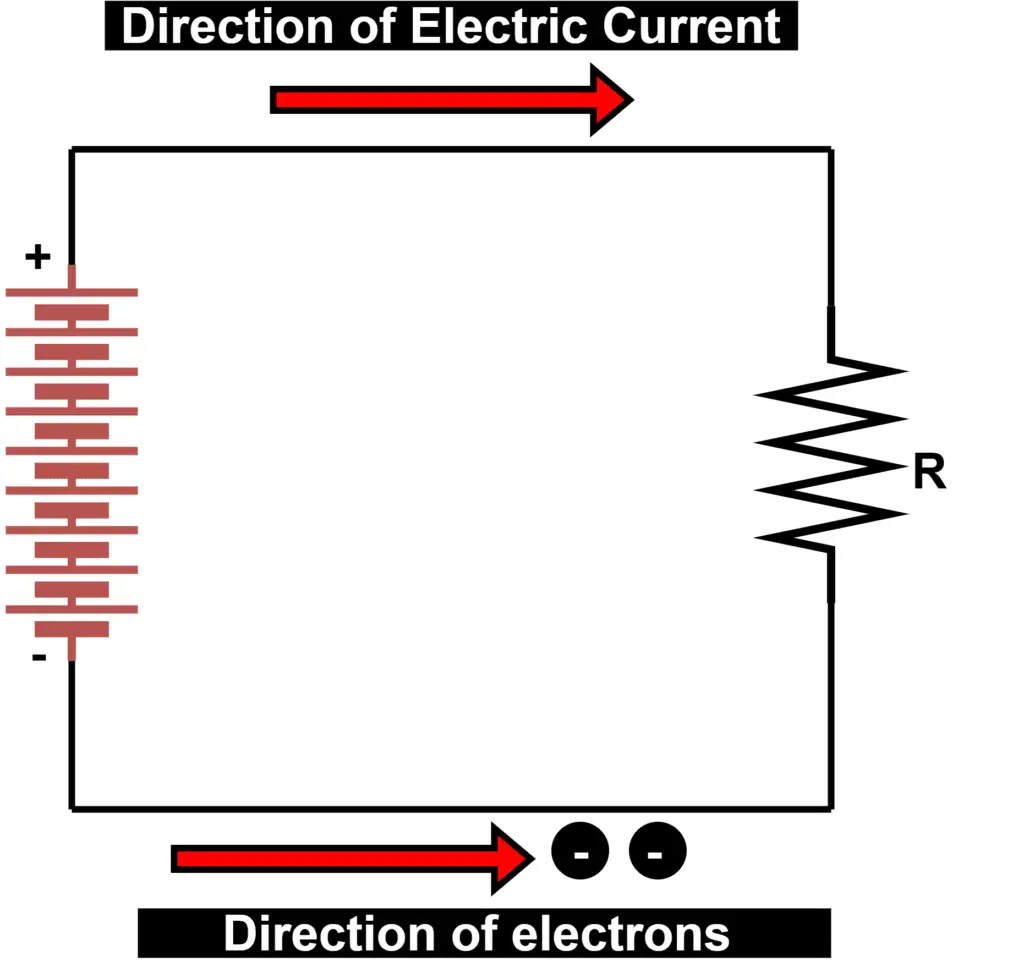The direction of electric current is in the direction of movement of positive charge. Thus, the current in the external circuit flow from the positive terminal to the negative terminal of the battery. And, the electrons move through the conductor in the opposite direction.
The direction of electric current may be a bit confusing, and its understanding is a must to know the flow of electric current in a circuit.
With the increased use of electricity, most of people are aware of electricity and electric current. In this blog post, we will understand the direction of electric current when voltage is applied in a circuit.
The Basics of Electric Current
The flow of electrical energy through a conductor takes place when an electric current flows through it. The movement of electrons from one atom to another causes flow of electric current and electrical energy in an electric circuit. The voltage source and the direction of electrons are the deciding factors for the direction of an electric current in the electric circuit.
The electric current can be defined as the rate of flow of charges through a conductor. The more the rate of flow of electric charges, the more the current in the circuit.
We can express the electric current by the following mathematical expression.

Where,
Q = charge of electrons flowing through the conductor
t= the time of flow in seconds.
The unit of electric current is ampere or A. one ampere is equal to one coulomb per second.
Understanding the Direction of Electric Current
It is important to know the basics of electricity before understanding the direction of electric current. The voltage applied to an electric circuit cause current to flow. The magnitude of electric current depends on the magnitude of the voltage and resistance of the circuit. We can increase the current in the circuit by increasing the voltage or by lowering the resistance.
We can find the direction of the electric current in a conductor by knowing the direction of electron flow. The electrons always flow from the negative terminal to the positive terminal of the voltage source. If the direction of electron flow is from negative to positive, then the direction of the electric current is opposite to the direction of the flow of electrons.

Electrons are negatively charged particles and they attract toward the positive charge particles. Therefore, the electrons move from the negative to the positive terminal. The direction of current flow is just opposite to the flow of electrons.
Direction of current flow in circuit analysis
We can either consider the flow of current from positive to negative or vice versa for circuit theory and analysis. The positively charged particles can attract negatively charged particles.
We generally consider the direction of electric current from positive to negative. The positive charge flowing in one direction is equivalent to the negative charge flowing in the opposite direction. Therefore, it does not make a difference.